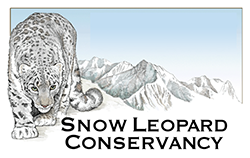
Snow Leopard Conservancy’s 5th Annual
Artwork & Poetry Contest – 2023
Harmony in Peril:
Exploring Climate Change, the Biodiversity Crisis,
and the Fate of the Snow Leopard
Climate change is a primary driver of biodiversity loss. And climate change depends on biodiversity as part of the solution. So, clearly the two are linked and cannot be separated.
Elizabeth Mrema, Executive Secretary, United Nations Convention on Biological Diversity
This year’s theme highlights the intricate relationship between climate change, the biodiversity crisis, and the future of the snow leopard species. We encouraged the artists and poets entering the contest to delve into the profound challenges faced by snow leopards due to these extremely important interconnected issues and express their thoughts and emotions through their creations.
HOW CLIMATE CHANGE IS AFFECTING SNOW LEOPARDS:
Climate change will most likely have an extreme effect on the biodiversity of our planet because of changes in habitat. This has already been noted in mountainous regions. For example, with climatic warming, the permafrost layer found beneath most of the snow leopard’s range will warm. This will result in a lowering of the water table. Lush meadows will be replaced by less-productive grasslands. Springs, streams, and ponds will begin to disappear. This transformation of the landscape will result in smaller populations of the wild prey species the snow leopard depends on for food.[i] Also, as the planet warms, the tree line will advance to higher elevations which could result in a loss of snow leopard habitat.[ii] In addition, expected weather extremes could result in droughts, exceptionally heavy, early, or late snowfalls, and partial melting and freezing of snow; all which could result in high mortality of prey species.[iii]
Prediction models of climate change impacts on snow leopard habitat throughout its range show that in the future the size of the southern portion of its range will decrease while suitable habitat in the northern portion will possibly increase. However, the models also show increased fragmentation of the entire habitat caused by the upward shift of the treeline.[iv] This would have a harmful effect on the species by isolating individual snow leopards from one another, similar to the effect of infrastructure development, thereby reducing the genetic diversity that maintains the health of the species.[v]
[i-v] John D. Farrington, and Juan Li, “Climate Change Impacts on Snow Leopard Range,” in Snow Leopards. Biodiversity of the World: Conservation from Genes to Landscapes, ed. by Philip J. Nyhus, Thomas McCarthy, and David Mallon (San Diego: Academic Press, 2016), 85-95.
Kidd, Shavaun. “Exploring Snow Leopard Conservation: Climate Change,” in Searching for the Snow Leopard, Guardian of the High Mountains, edited by Shavaun Kidd and Bjorn Persson, (New York: Arcade Publishing, 2020), 133.
